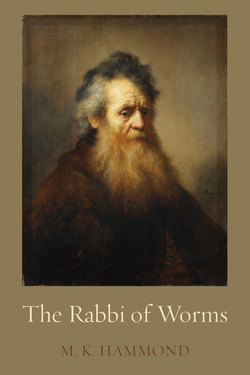Читать книгу The Rabbi of Worms - M. K. Hammond - Страница 5
На сайте Литреса книга снята с продажи.
Foreword
ОглавлениеM. K. Hammond has written an extraordinary account of the eleventh-century epochal events that have so greatly impacted the history of Jewish-Christian relations. In light of current developments, those events seem especially relevant.
The setting is the Rheinland in the period before the First Crusade, which began in 1096 and culminated in the capture of Jerusalem in 1099. The author draws her inspiration from the life of the venerated sage Rabbi Solomon ben Isaac, also known as Rashi, who studied in Mainz and Worms before founding a yeshiva in Troyes. In creating a sense of historical authenticity, Hammond captures the positive and tolerant atmosphere that characterized the era just before the fateful events that followed the Crusades. She does this by depicting the lives of men and women in both the Jewish and Christian communities who exemplify the very best of those traditions and of human nature. For the moral voice for understanding the tragic turn of events at the end of the century, she turns to Rabbi Solomon ben Isaac and his teachings; he helps the protagonists in their quest to understand what was happening in the world around them and enables the reader to extract the very best and noble aspects of the two traditions.
The result of this endeavor is an historical novel that is informative, compelling, and inspiring. The descriptions of the Jewish Quarter in Worms, for example, where the story begins, is detailed and vivid enough to capture one’s attention at the outset and to focus on the main characters: Josef, a Christian orphan whose route to learning and personal development is through a close Jewish friend who becomes his Hebrew tutor and mentor, Mosche, and his sister Miriam, whose life’s quest is to be a fulfilled Jew through study and learning in addition to having a family and managing a household. Miriam’s story resonates in many ways with women today in current traditional Jewish communities, and Rabbi Solomon’s role in her development should be an object lesson for all rabbis today. Much of the story centers around the positive interactions of the two communities represented by the siblings and Josef. Those interactions include regular study sessions introduced via the teachings of the famed rabbi. One cannot escape the hopeful tone of this portion of the book, Part I: Torah study is important in both Judaism and Christianity, and serious students learn from their respective tradition to accept the other with respect and tolerance. The implication of that situation is that mutual understanding is the key to positive human interaction. The true test of that idea has a tragic outcome in the form of the beginning of the First Crusade, when centuries of mutual interaction and acceptance come to an end.
In Part II of this only partially invented story in which all the characters either are actual historical figures such as Rashi, King Henry, and Bishop John of Speyer or characters created to propel the narrative and allow the author to provide details of everyday life, the horrific details of slaughter of the Jews in town after town are recounted in great detail. The Jewish community is thus confronted with some of the most difficult decisions imaginable: to resist by force and create more killing, to commit suicide for the sanctification of God’s Name, to publicly renounce their faith and be baptized, or simply to pretend to be Christian by learning a few prayers from the liturgy. As the survivors of these massacres move to new homes and new places in France, Hammond turns to the writings and rulings of Rashi on such matters to help the reader comprehend these awful choices. Josef’s actions to assist Miriam and the survivors of her family achieve a new life in Troyes symbolize the hope that underlies this narrative and represent the Christian counterpoint to Rashi’s tolerant views of other faiths, but especially Christianity. Despite the horror of the Crusades and ensuing descent into chaos that followed for all the children of Abraham, Hammond’s positive account of what might have been, had the teachings of the Rabbi of Worms been observed and followed, provides a timely example for all who care about interfaith communication and peace in the Middle East.
Eric M. Meyers, Director
Center for Jewish Studies
Duke University
Durham, North Carolina
